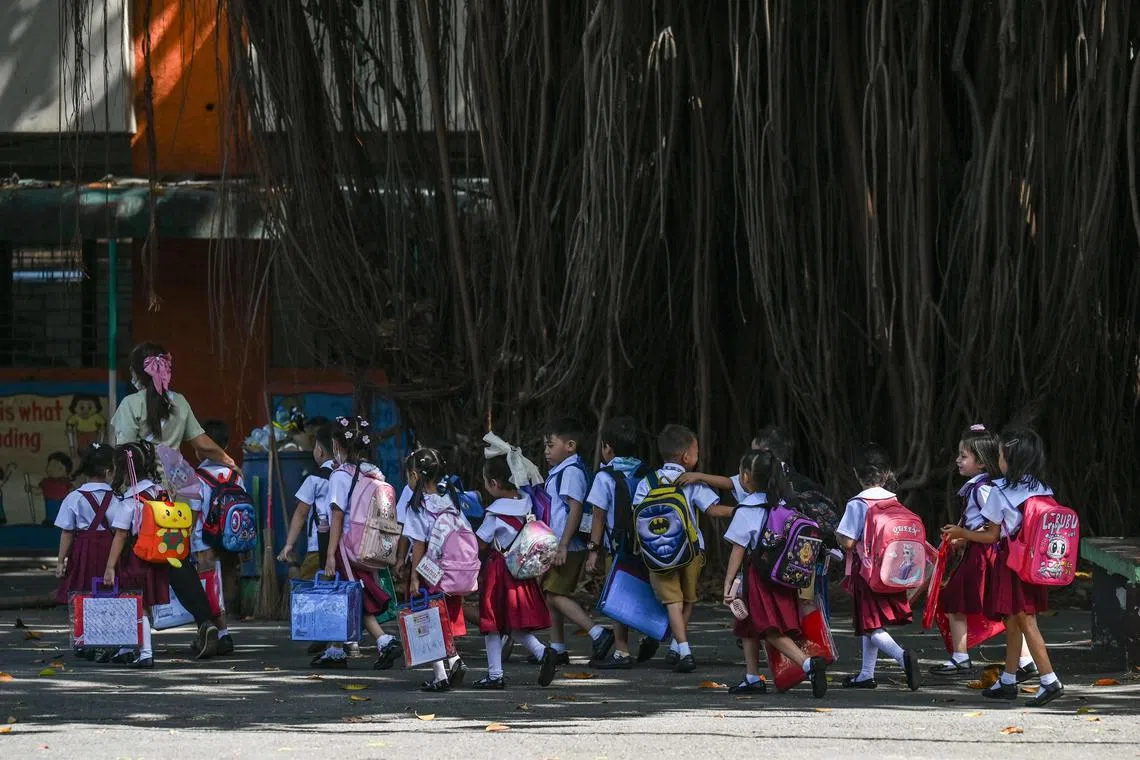Heatwave shuts down nearly half of schools in Philippine regional capital
Sign up now: Get insights on Asia's fast-moving developments

Students leaving school in Manila as school officials suspended classes on March 3 due to extreme heat.
PHOTO: AFP
Follow topic:
MANILA – Soaring temperatures shut down schools in nearly half the Philippines’ capital region on March 3, following the start of the torrid dry season.
A national weather service advisory warned that the heat index – a measure of air temperature and relative humidity – was set to reach “danger” levels in Manila and two other adjoining cities.
“Heat cramps and heat exhaustion are likely” at that level, the advisory said, warning residents in affected areas to avoid prolonged exposure to the sun.
A heatwave struck large areas of the Philippines in April and May 2024, leading to almost daily suspensions of in-person classes, affecting millions of students.
Manila’s temperature hit a record 38.8 deg C
While temperatures were expected to hit only 33 deg C on March 3, local governments in Manila and six other cities ordered classrooms closed as a precaution.
Metro Manila – the capital region – has a student population of more than 2.8 million, according to Education Ministry data.
In Malabon city, north of Manila, Education Ministry official Edgar Bonifacio said the suspensions affected more than 68,000 students across 42 schools.
“We were surprised by the heat index advisory,” Mr Bonifacio said, adding: “We cannot feel the heat yet outside.”
However, due to protocols adopted during the 2024 heatwave, Malabon’s school superintendent recommended suspending in-person classes.
“Our main concern is we’re near the end of the school year (in mid-April),” Mr Bonifacio said. “This would mean a reduction of the number of school days available.”
In Valenzuela, another city in Metro Manila, school official Annie Bernardo said its 69 schools were instructed to shift to “alternative” learning models, including online classes.
Global average temperatures hit record highs in 2024
In January, UN children’s agency Unicef said extreme weather disrupted the schooling of about 242 million children in 85 countries in 2024, including the Philippines, with heatwaves having the biggest impact.
Human activity, including the unrestricted burning of fossil fuels over decades, has warmed the planet and changed weather patterns.
That has meant wetter wet periods and dryer dry periods, intensifying heat and storms and making populations more vulnerable to disasters. AFP

